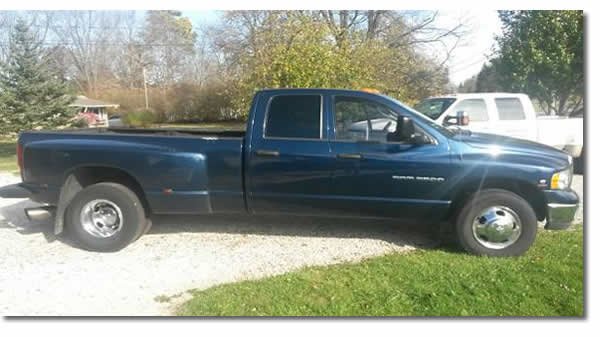 My 2003 Dodge Ram 2500, 5.9L Cummins 4×4 has a 48re auto transmission. When I put it into drive I feel it go in and sometimes everything is fine. Other times the truck will barley move until it gets up to speed(15 mph) and shifts into 2nd then its all good. My question is, is this internal or a solenoid going bad. The truck sat for a couple of months while I recovered from surgery but before that everything was fine…
My 2003 Dodge Ram 2500, 5.9L Cummins 4×4 has a 48re auto transmission. When I put it into drive I feel it go in and sometimes everything is fine. Other times the truck will barley move until it gets up to speed(15 mph) and shifts into 2nd then its all good. My question is, is this internal or a solenoid going bad. The truck sat for a couple of months while I recovered from surgery but before that everything was fine…
RESPONSE
Checking the transmission fluid level and color will give you the answer to your question. If the color of the fluid is pretty redish/pink than it would be a sensor/solenoid issue. You may have codes stored. If the color is dark or burnt, there is an internal issue that may require a rebuild. And of course if the fluid level is low, topping it off and testing would be prevalent.
Transmission Diagnostic Trouble Codes
Diagnostic trouble codes (DTC’s) are codes stored by the Transmission Control Module (TCM) that help us diagnose Transmission problems. They are viewed using the DRBIII® scan tool.
Always begin by performing a visual inspection of the wiring, connectors, cooler lines and the transmission. Any obvious wiring problems or leaks should be repaired prior to performing any diagnostic test procedures. Some engine driveability problems can be misinterpreted as a transmission problem. Ensure that the engine is running properly and that no PCM DTC’s are present that could cause a transmission complaint.
If there is a communication bus problem, trouble codes will not be accessible until the problem is fixed. The DRBIII® will display an appropriate message. The following is a possible list of causes for a bus problem:
- open or short to ground/battery in PCI bus circuit.
- internal failure of any module or component on the bus
Each transmission diagnostic trouble code is diagnosed by following a specific testing sequence. The diagnostic test procedures contain step-by-step instructions for determining the cause of a transmission diagnostic trouble code. Possible sources of the code are checked and eliminated one by one. It is not necessary to perform all of the tests in this book to diagnose an individual code. These tests are based on the problem being present at the time that the test is run.
If the TCM records a DTC that will adversely affect vehicle emissions, it will request (via the communication bus) that the PCM illuminate the Malfunction Indicator Lamp (MIL). Although these DTC’s will be stored in the TCM immediately as a 1 trip failure, it may take up to five minutes of accumulated trouble confirmation to set the DTC and illuminate the MIL. Three consecutive successful OBDII/EURO III trips or clearing the DTC’s with a diagnostic tool (DRBIII® or equivalent) is required to extinguish the MIL. When the TCM requests that the PCM illuminate the MIL, the PCM sets a DTC ($89) to alert the technician that there are DTC’s in the TCM. This must also be erased in the PCM in order to extinguish the MIL.